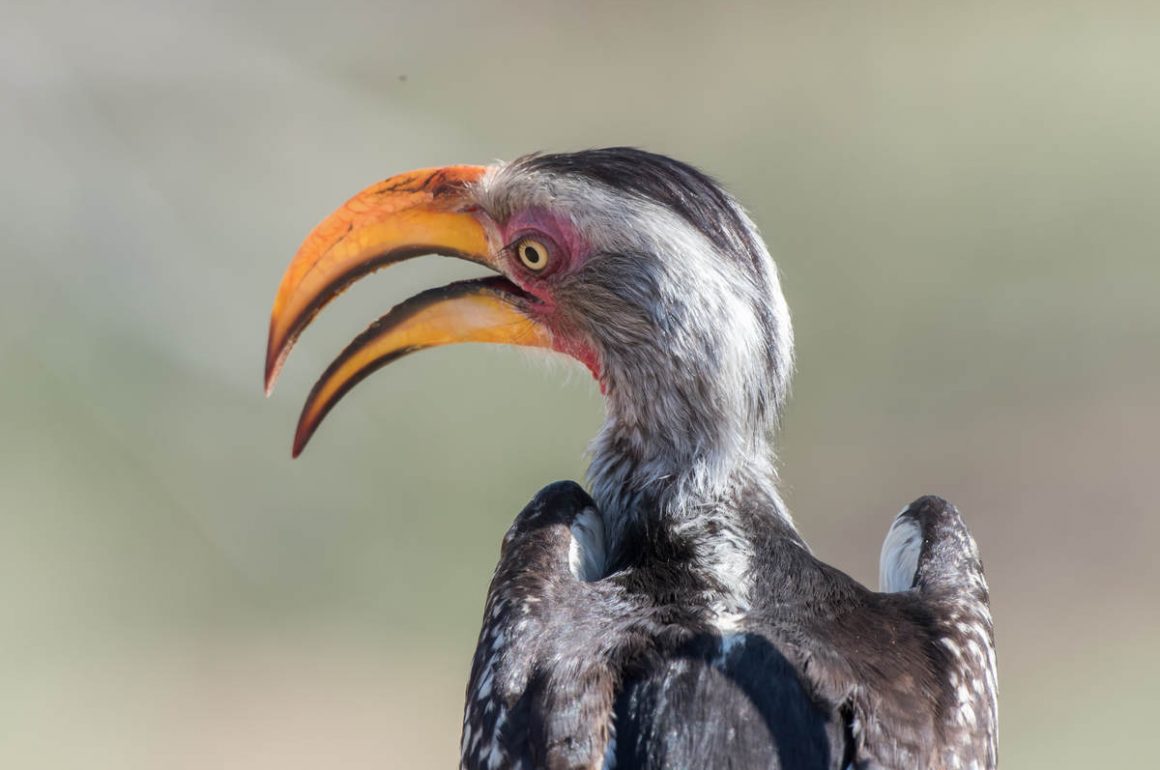
I usually do not write much about traveling to and from birding places but my friend and I arrived in Malelane in the afternoon. We had been driving through Eswatini (Swaziland) for a few hours during the day, coming from Ndumo. Eswatini must have the worst paved roads I have ever experienced. It also is the country with the highest rate of HIV infections in the population (26.8%), though these two things are not necessarily related. As we only used the roads and did not have sex in Eswatini, the latter did not really affect us. It may indicate, however, that the form of government in Eswatini – it is Africa’s last remaining absolute monarchy – is not ideal.
Malelane is a small town just outside of the Kruger Park – we dropped our stuff there before entering the park for the first time. The room was one stuffed with pillows – it seems some landlords think the more pillows are in a room, the cozier the place is. Makes me feel I am suffocating though – in an ideal world, the first thing I would like to do is ask for a trash container, get rid of the pillows and most of the decorations, and be able to breathe more freely afterward.
Fortunately, we were there for the birds, not for the room. And while the Lilac-breasted Roller is quite colorful, it is very well designed for its purpose – evolution has seen to that after failing to do the same with regard to pillows.
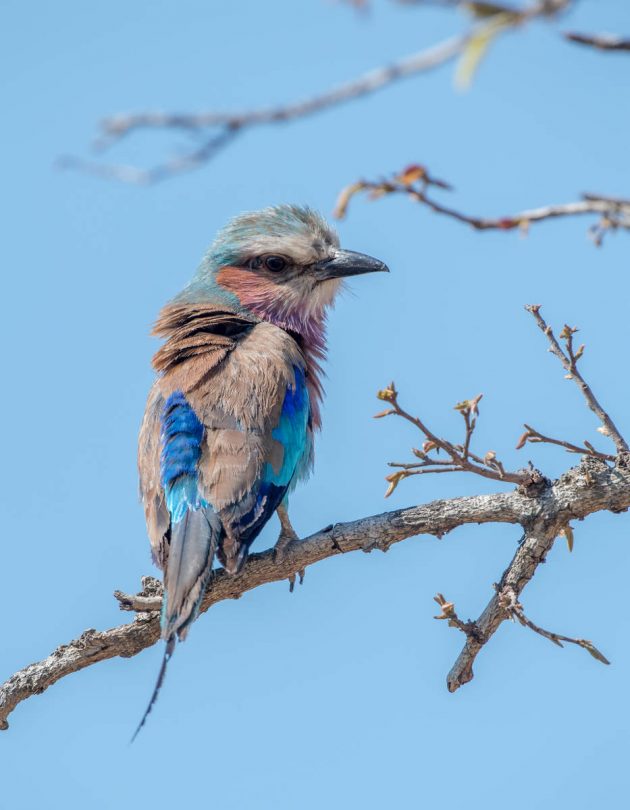
The HBW allows itself a rare moment of dry humor when discussing the sounds of the species: “Most vocalizations of this species are harsh and unmusical. Rather unsurprisingly, little effort has gone into studying its repertoire.”
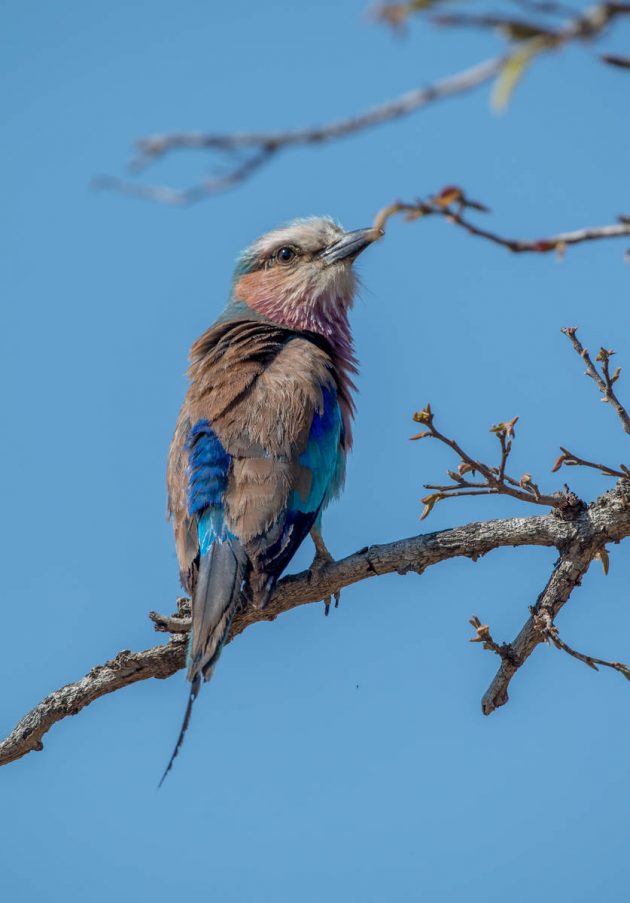
The Latin species name caudatus does not really mean much – just that it has a tail. Thanks for pointing that out.
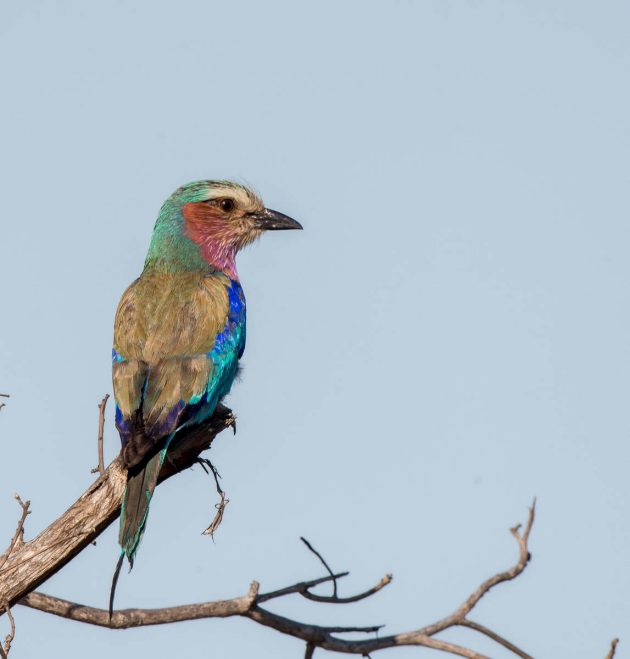
The Lilac-breasted Roller is the national bird of Kenya, but of course, this does not help it pay its bills in South Africa.
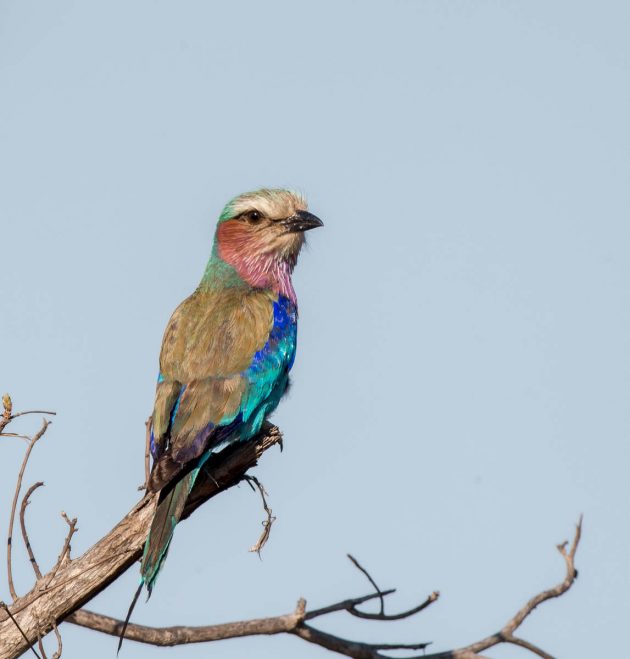
The Magpie Shrike looks like a magpie but is a proper shrike.
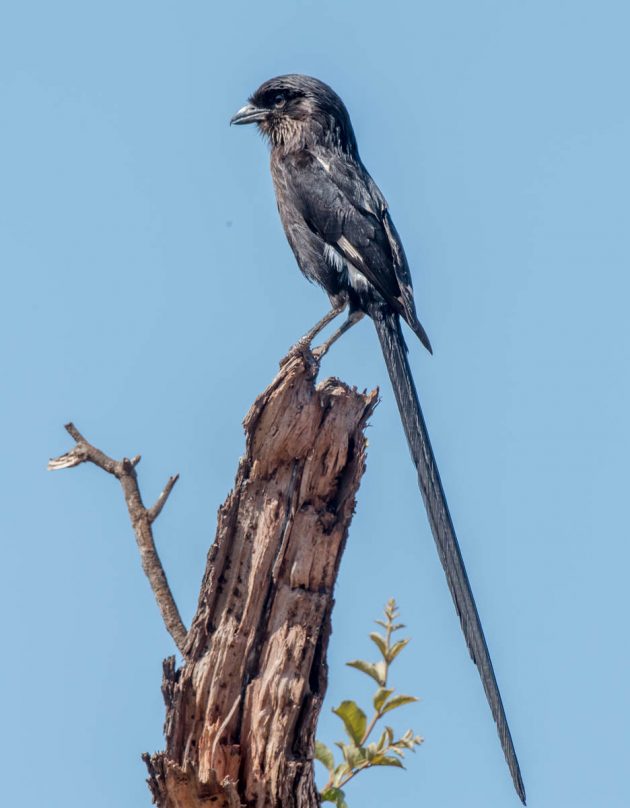
Apparently, it is sometimes also called Long-tailed Shrike, but if it actively uses this name, it will probably hear from the lawyer of our local Chinese Long-tailed Shrike (Lanius schach) sooner or later. Its tail is indeed much longer than that of the Long-tailed Shrike though.
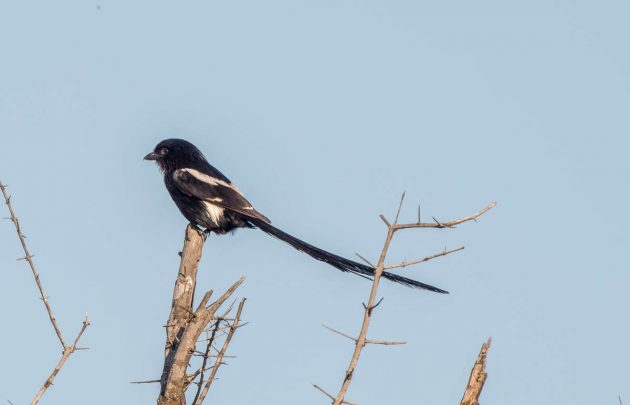
Due to some misallocation of bird species, I saw the Bateleur Eagle near Malelane, not near Bateleur Camp, where a more professional marketing team would have located the bird.
Bateleur is French for ‘tightrope-walker’, a name supposedly chosen because of its distinctive aerial acrobatics (source). The Bateleur is listed as Endangered.
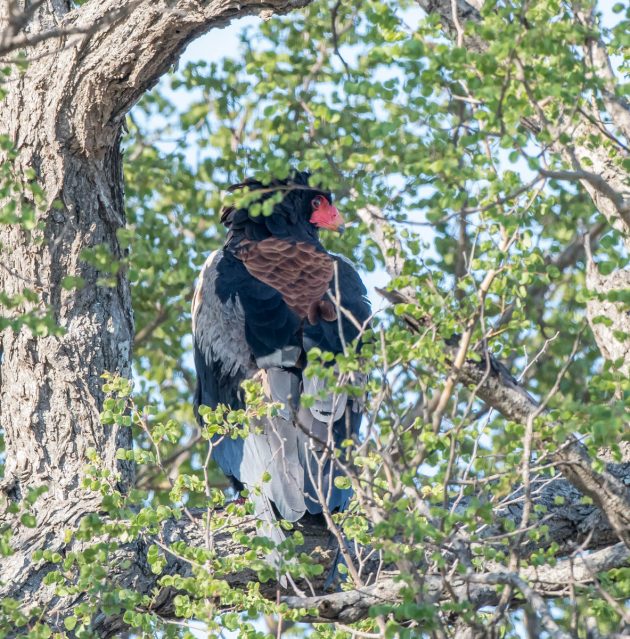
This is probably a Burchell’s Starling. Burchell was an English naturalist who was not exactly lucky in love. He first traveled to St. Helena on his own, but when his intended wife came to join him, she left him for the captain of the boat taking her to St. Helena. Ironically, Burchell’s Starling is thought to be monogamous.
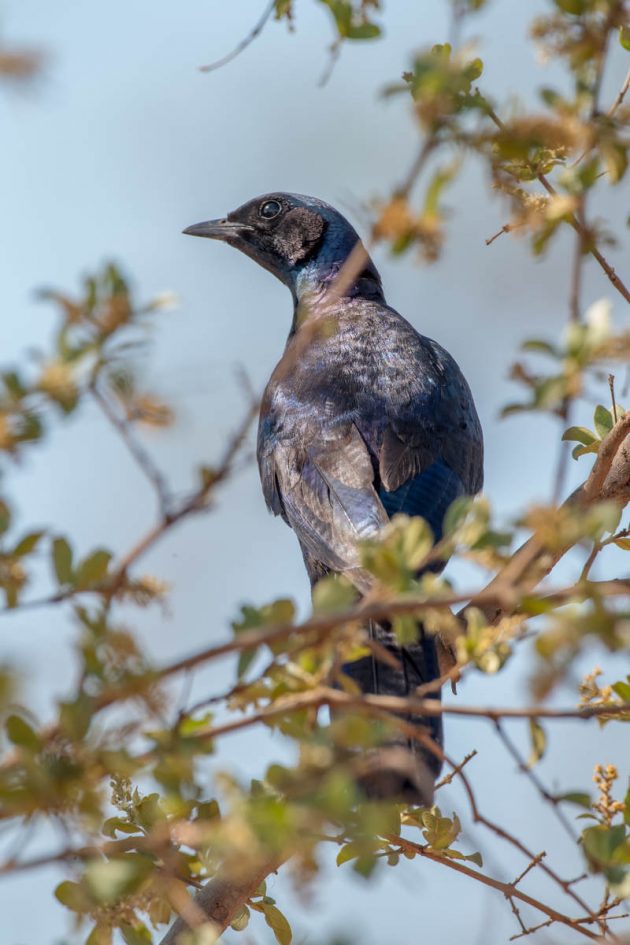
This is another starling – probably not another Burchell’s but not sure at all. Maybe a Blue-eared Starling? Lesser? Greater? Feel free to submit your vote.
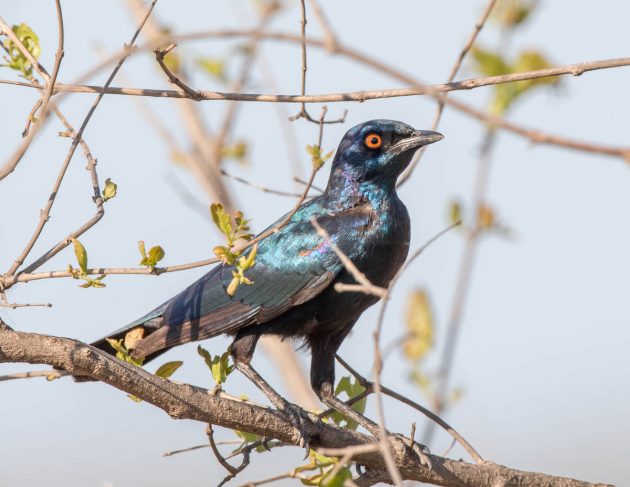
The Green Wood Hoopoe does not strike me as particularly green. It was previously called the Red-billed Wood Hoopoe, which arguably makes more sense.
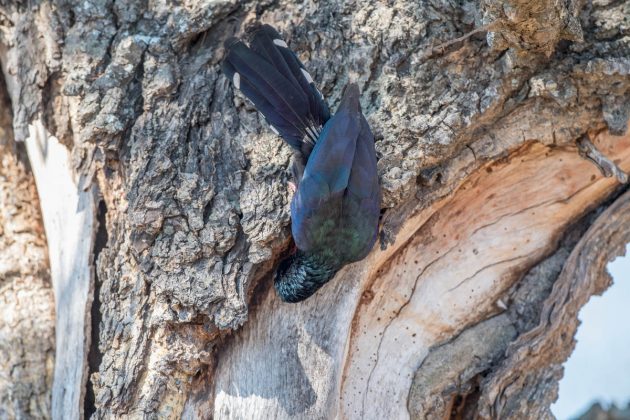
The Latin species name purpureus (purple) also seems to indicate that the choice of the name Green Wood Hoopoe is a slightly weird one.
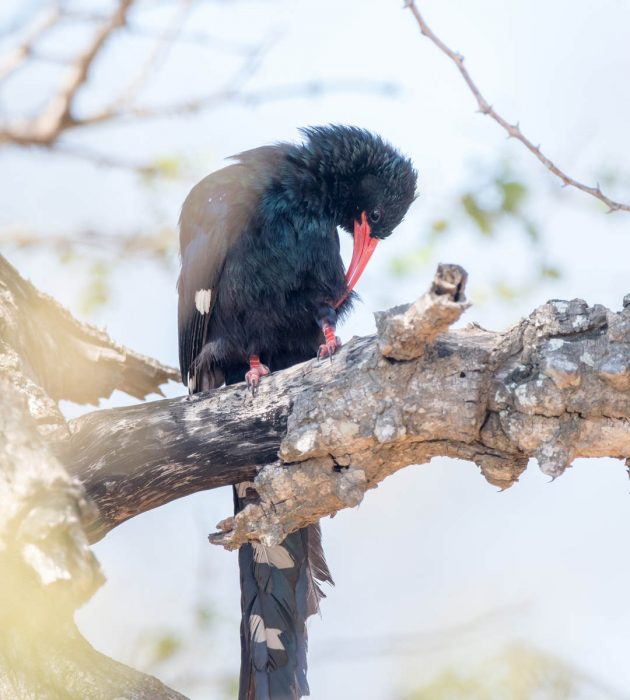
Levaillant’s Cuckoo is named after François Levaillant, though this Frenchman was not a brood parasite but rather an ornithologist and naturalist.
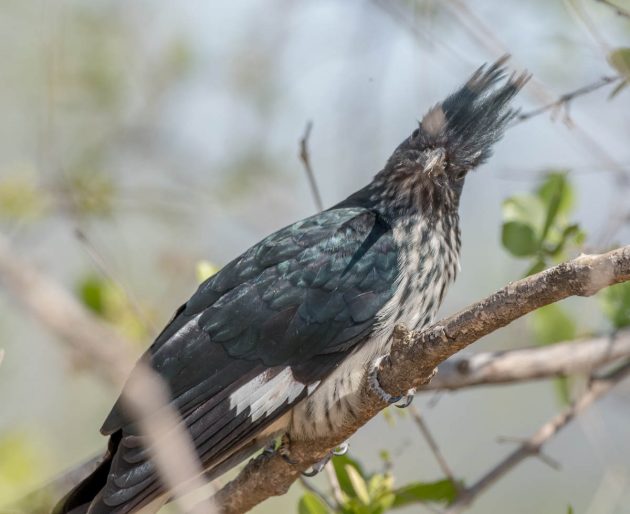
The range of this cuckoo is expanding as its preferred host species, the Arrow-marked Babbler, widens its distribution.
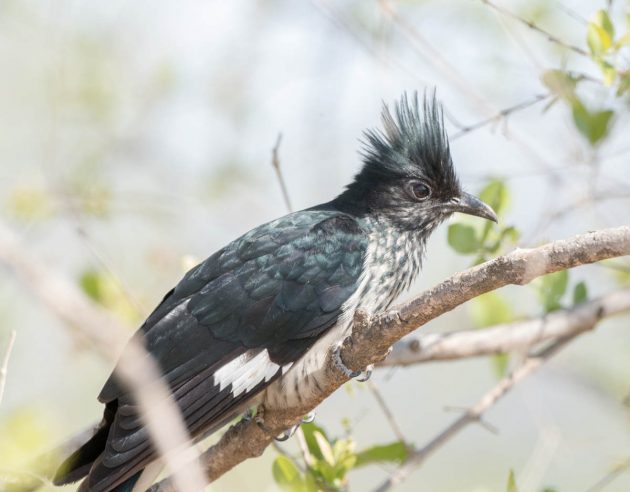
eBird does a bad job of concealing its disinterest in the Neddicky, calling it a “small, very plain cisticola of uplands”. It seems inner values do not matter much for eBird.
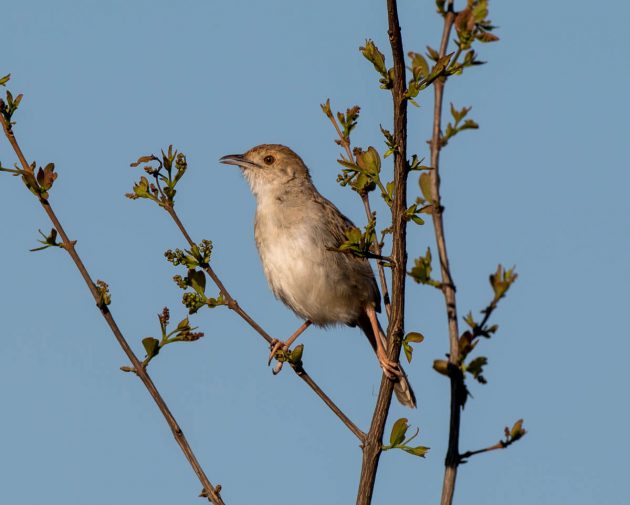
The HBW description of the male vocalization does not sound much more positive: “Male song, from elevated perch, a frog-like, penetrating but rather ventriloqual ‘peeep peeep peeep…’, repeated monotonously at 2–3 notes per second”.
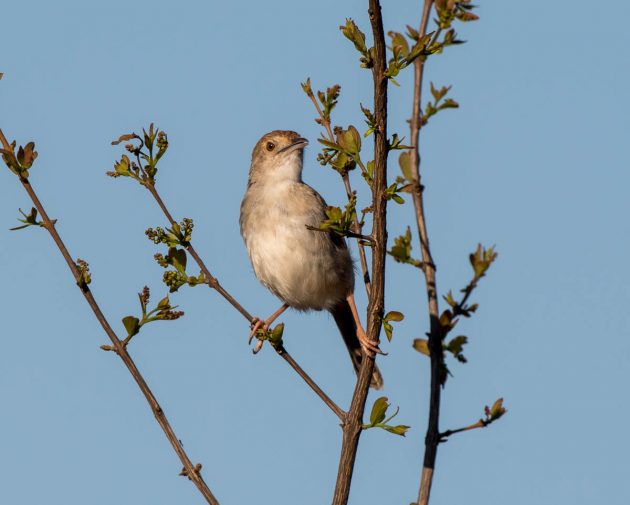
While one Sabota Lark may look very similar to us as another, their individual qualities as architects show wide variation. A study found that their “nest quality varied considerably, including in the presence or absence of a dome and an apron.” Not to speak of the presence or absence of a carport and a veranda.
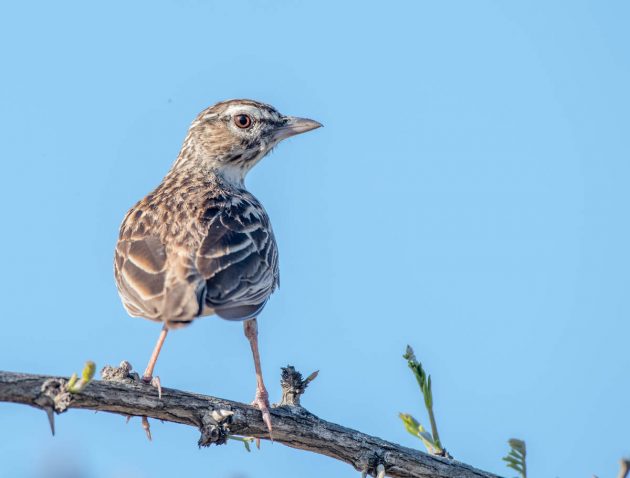
According to eBird, the Southern Yellow-billed Hornbill is sometimes referred to by its nickname of “flying banana”.
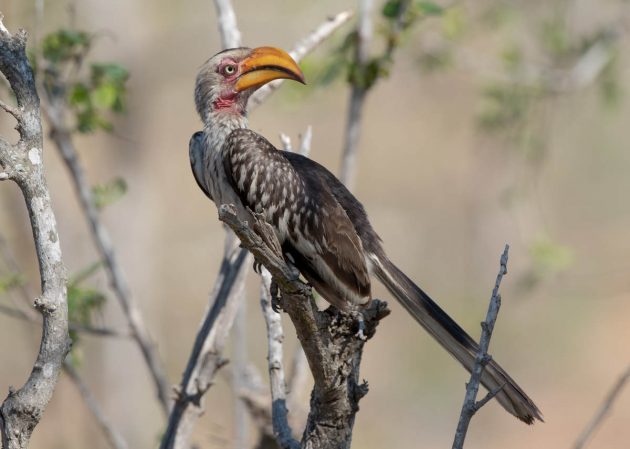
Another website claims that the species is “often referred to as the ‘Rod Stewart’ of birds”, but as I only found this mentioned on this one website, maybe this is just that somebody who hates Rod Stewart made this up. His music is rather bad, after all.
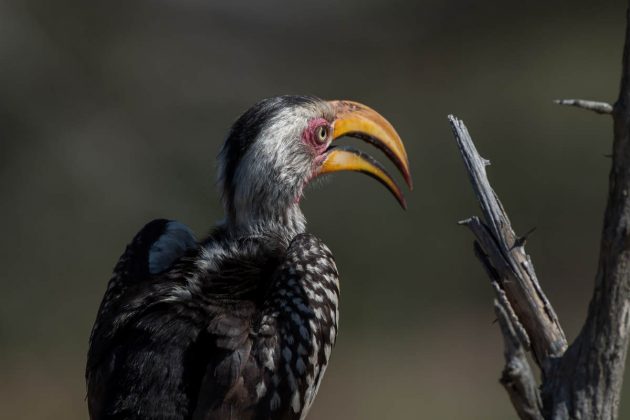
These hornbills have the well-tried breeding strategy of enclosing the female in a tree hole. If you want to think what a female thinks about this approach, look here for a cartoon (note: with bonus covid joke).

Apart from the cartoon, that link also summarizes a serious paper on the difference between male and female hornbills in coping with heat: “The females used 17% less water than the males and 13% less energy as they panted to keep cool. It seems that the females are better prepared for the muggy conditions inside their nests than the males that are never imprisoned.”
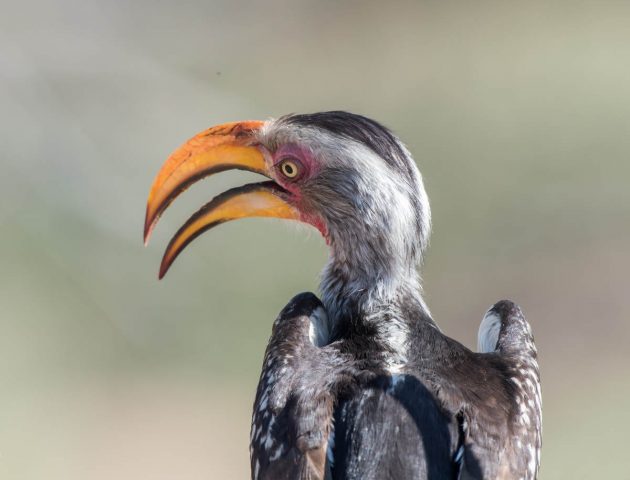
Isn’t nature wonderful?
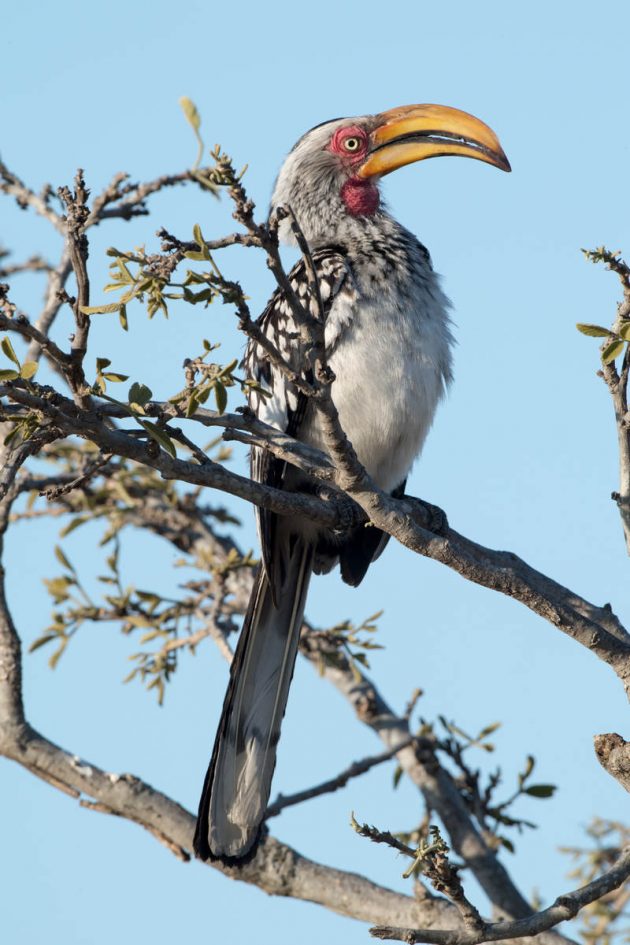
However, the German name for this species – “Südlicher Gelbschnabeltoko” – sounds suspiciously made up. When I asked for one in a German pet shop, they just laughed at me.
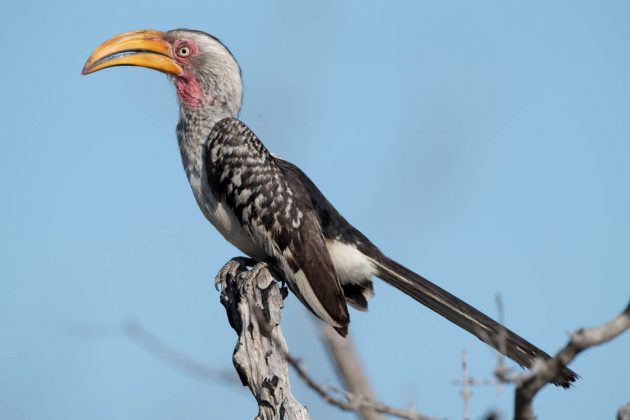
Wahlberg’s Eagle is named after the Swedish naturalist Johan August Wahlberg who first started studying chemistry (!) but later switched to forestry (?). Fate eventually caught up with him when he was killed by a wounded elephant in the Okavango area, though possibly the blow was lessened a bit by being elected a member of the Royal Swedish Academy of Sciences since the news of his death had not reached Sweden yet (source).
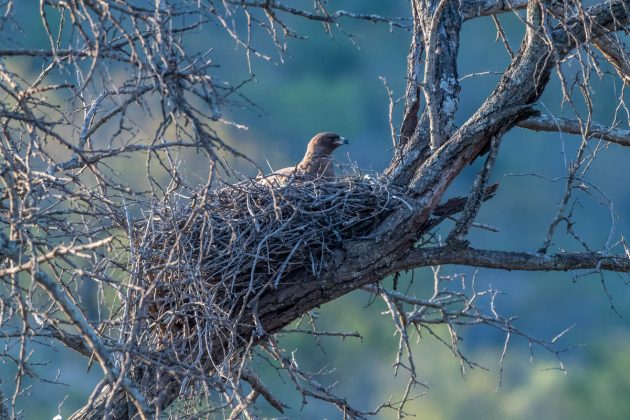
Breeding success in White-fronted Bee-eaters depends strongly on helpers, mainly by reducing the number of chicks dying of starvation (which at 48% of all chicks is indeed frightfully high). The study found that the presence of one helper effectively doubled the fledging success of an unaided pair.
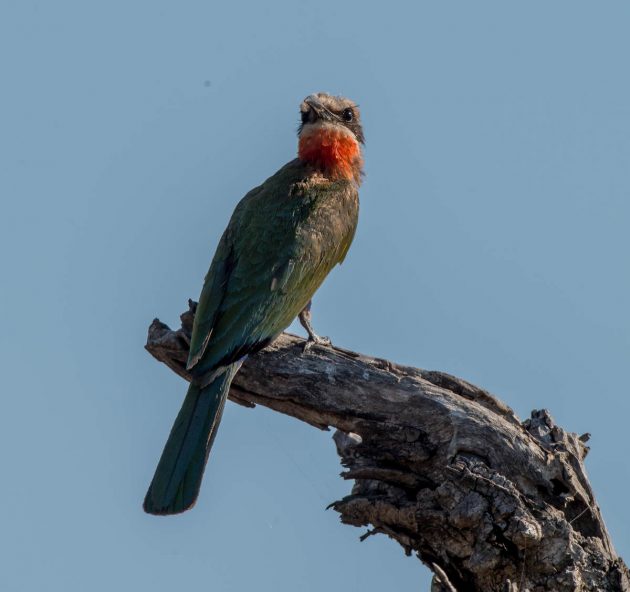
Like most parts of Kruger Park, the Malelane area has its share of non-birds. I heard some people even come to the park just to see these. People are strange. That also explains the pillows.
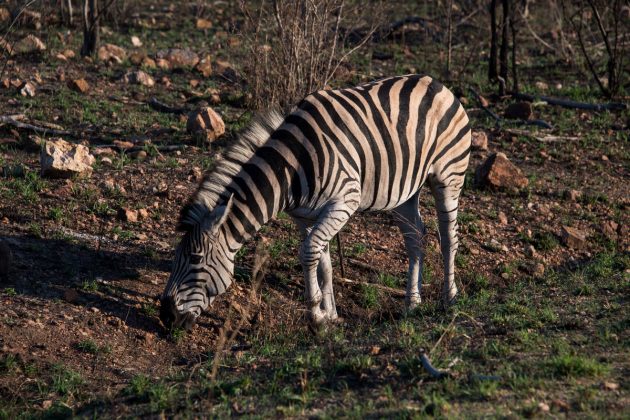
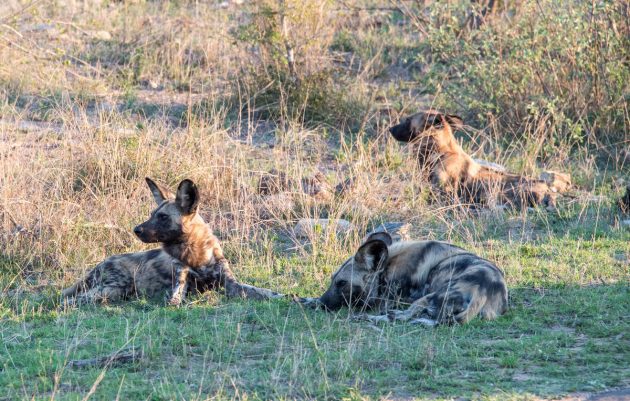
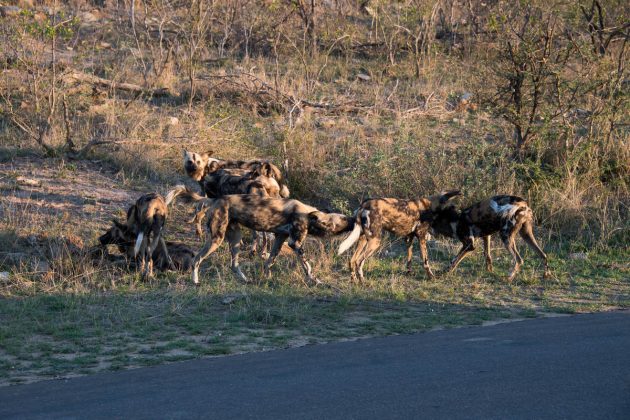
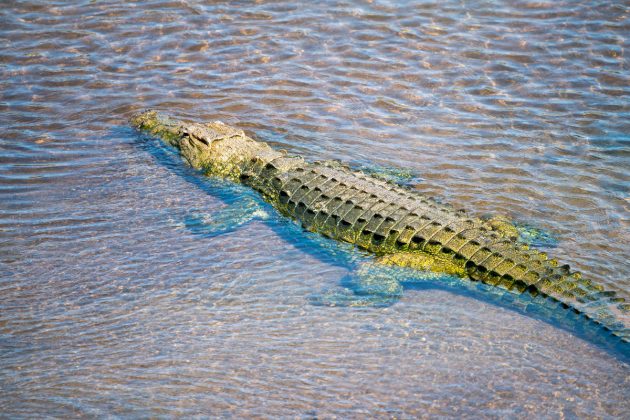
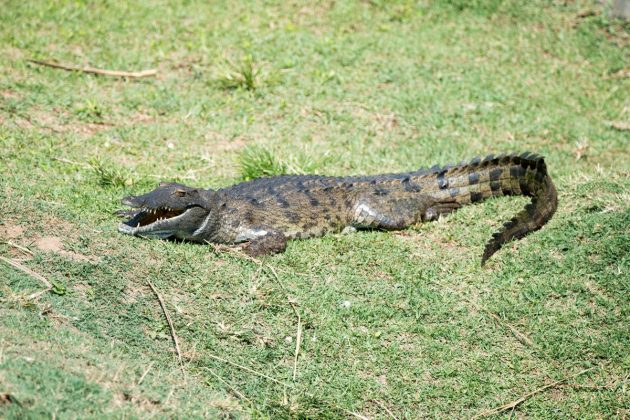
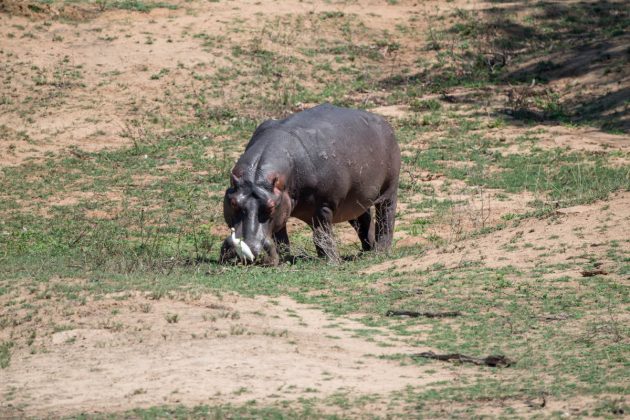
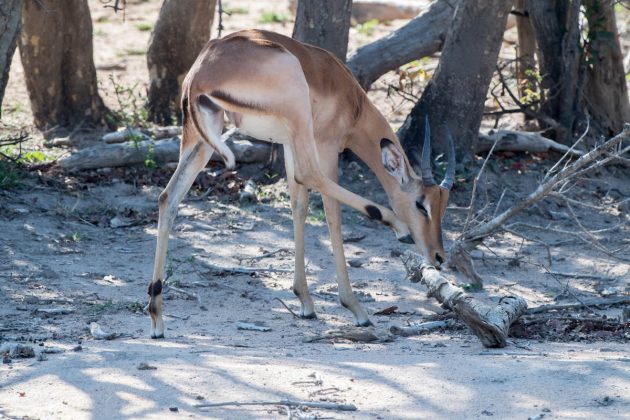
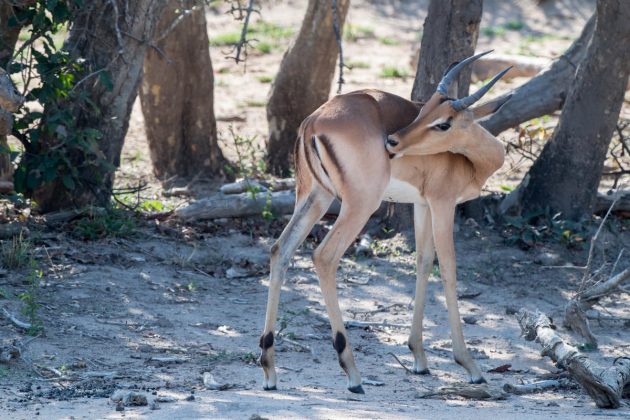











Cape Glossy Starling
Thanks, Riana!